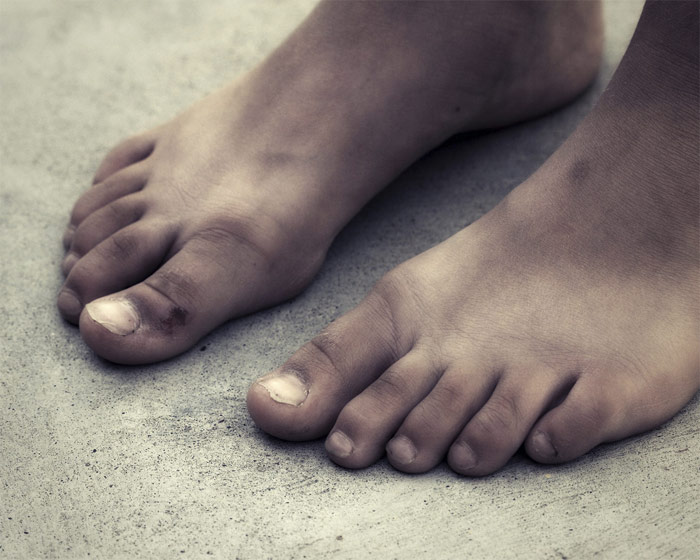I’ve lived in Southeast Asia for about four months now. It’s warm year-round, and just about everyone wears flip flops. In a hot, wet place that has the tradition of taking off shoes before entering someone’s house or any sort of religious or special building, flip flops make sense. They dry quickly, allow the feet to breathe, and are easy to slip on and off.
The city that I live in here in Southeast Asia is big and dusty. After spending a day out and about in the city, I’ll come home and my feet will be a few shades darker from the dust and dirt that is caked on them. I love the feeling of then standing in the shower, turning on the water, and seeing the dirt melt away from my feet and go down the drain.
In the past, I’ve thought of Jesus’s washing the feet of the apostles [John 13:4–10] solely as an act of service that was also an example of how the apostles should serve and be humble. I still think that’s the case. But washing my own dirty feet has brought a few additional insights to mind:
1.
The act of physically removing the dirt and grime from someone’s feet is an extremely powerful visual metaphor of the atonement. The transformation from dirty feet to washed feet is striking. Christ is literally wiping away the dirt to make something clean again, just as he enabled us to be cleansed spiritually.
2.
I take a shower more or less every day, so my feet don’t have more than a day’s worth of dirt on them, but cleaning my feet still isn’t quite as easy as just hosing them down. Sometimes I need to rub them clean with a washcloth. If my feet are like that after a single day in a modern city, I can’t imagine what the apostles’ feet must have been like in dusty Jerusalem a couple thousand years ago, when I’m guessing they didn’t bathe daily. That realization makes Christ’s washing of the feet even more meaningful. Washing feet likely wasn’t as simple as pouring a pitcher of water over the feet and calling it good. Rubbing and scrubbing—real labor—would have been required.
3.
Not only does Jesus wash the apostles’ feet, but he wipes their feet with a towel that he’s wearing, as stated in these two verses of John 13 [NLT]:
4 So he got up from the table, took off his robe, wrapped a towel around his waist,
5 and poured water into a basin. Then he began to wash the disciples’ feet, drying them with the towel he had around him.
Notice how Jesus is not only washing the feet, but wiping their feet with the towel. I don’t know in this case if Jesus was merely drying their feet with the towel, or if he used the towel as part of the cleaning or scrubbing process. But I do know that even after I’ve cleaned my feet as best I can in the shower, I’ll wipe and dry them with a white towel afterward and the towel will still pick up some of the gray-black dirt that I didn’t get off in the shower. So at least to some degree, Jesus was literally taking upon himself the dirt that was on his disciples—he was transferring it from the feet of his apostles to his actual person. Again, the parallel to the atonement is clear.

Photo by Flickr user gfpeck.